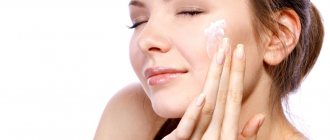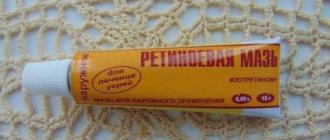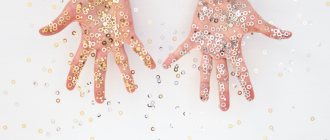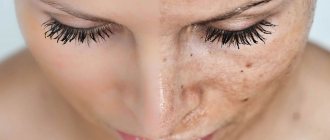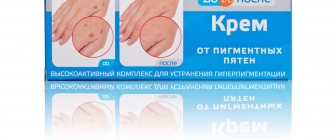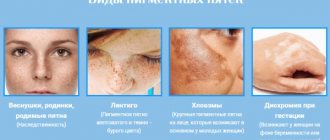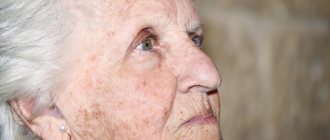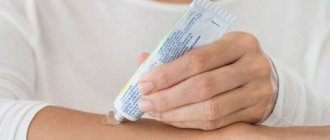Pigmentation is a process of impaired melanin production. It appears in the form of light yellow, yellow, dark brown spots on the skin with uneven edges and different diameters. The problem most often occurs in places that are exposed to ultraviolet radiation. There are many ways to lighten. Kojic acid helps to achieve high results for pigmentation and restore clearness to the skin.
What is it and how does it affect pigmentation?
Kojic acid is a substance obtained from Japanese mushrooms. It is released during metabolism. It has a whitening effect on the skin and is included in many cosmetic products.
It has the appearance of a colorless crystalline powder that disintegrates when exposed to water. This inconspicuous product can affect melanin, stopping its production. Melanin is a natural pigment that gives color to hair, eyes and skin. If there are violations in its production, then unaesthetic stains appear.
In what cases should it be used?
Hyperpigmentation can start for a variety of reasons. These may be malfunctions of internal systems and organs or external factors. Skin coloration often changes among intense tanners. The skin takes on a bronze tint, and in some places it is covered with small spots and freckles. If the spots evenly occupy the area and have the same shade, this is a reaction of the dermis to ultraviolet radiation and will soon go away. In the future, you will need reliable protection in the form of a cream with SPF 50 or higher.
If yellow or black unevenly colored changes appear, you should pay attention to the condition of the body. Often the reason lies in the following:
- improper liver function;
- taking antibiotics;
- changes in hormonal balance due to puberty, pregnancy, diseases of the reproductive system or thyroid gland;
- problems with the gastrointestinal tract;
- stress;
- impaired metabolism;
- dermatological diseases;
- senile changes.
Kojic acid is used in all cases of pigmentation, but in cases where the culprit lies within, a comprehensive treatment is required. Exposure to the spot from the outside will not bring the desired whitening effect if the diseased organ continues to produce excess melanin.
Instructions for use
The acid preparation is recommended to be used to combat pigmentation, but as part of cosmetics. These funds are used for a course of 1-2 months. Apply to clean skin 1-2 times a day depending on the concentration. The use of a complex of cosmetics will help enhance the effect. They are in the lines of many brands.
The first results will appear in 4-6 weeks.
Important! When using kojic acid-based cosmetics for day care, protect your face and other parts with sunscreen with a high SPF level. Sunbathing is strictly prohibited!
Masks for pigment spots
Masks for age spots give excellent results when used regularly. Effective recipes:
- Lemon and hydrogen peroxide. You need to take ripe citrus and squeeze the juice out of it. In total you will need 1 tsp. Pour the juice into a glass container and add the same amount of peroxide. Apply the resulting mixture to the pigmented area for 10 minutes. The procedure should be repeated 3 times a week until the spots lighten.
- Parsley and kefir. You need to take fresh herbs and squeeze the juice from the leaves. You will need 1 tbsp. l. Add the same amount of kefir to the resulting juice. Mix thoroughly, moisten a cotton pad and apply to the stained area. Leave for 15 minutes, then rinse with water. Use daily for several weeks.
- Lemon and honey. You will need 10 drops of citrus juice. It must be mixed with 50 g of honey. Then apply to age spots, leaving for 10 minutes. The mask will work gradually. You will need to do it every other day for a month.
Mask for age spots with parsley - video
Which cosmetics contain kojic acid?
The substance is found in skin cleansers, cream formulations, serums, various masks, and peelings. You can often find a combination with glycolic acid. It is used as one of the components in toothpastes and preparations for the care and treatment of the oral cavity. Effective cosmetics with whitening properties, in addition to kojic acid, contain vitamins C, A, E, licorice in the form of an extract extracted from the root, fruit acids, enzymes and other brightening substances. After opening the package, the composition quickly loses its properties. It is recommended to spend these funds as soon as possible.
The content of kojic acid in cosmetics ranges from 1-4%. The concentration depends on the type of product, its components and purpose.
- lotion – 0.1-1%;
- peeling – up to 4%;
- gel – 0.1-1%;
- anti-acne soap – 0.1-1%;
- tonic – 0.1-1%;
- serum – 0.8-1%;
- whitening cosmetic preparations – 1-4%;
- mask – 1-4%;
- cream – 1-4%.
Some products for active action on the stain must be applied and left for some time. This way the composition can be completely adsorbed and have a brightening effect.
Each koya preparation must contain ultraviolet irradiation filters. This protects the skin from sun exposure, which can make the pigmented area even brighter and provoke the growth of new spots.
Before use, be sure to test for an allergic reaction.
Do not add pure acid to a cream or ointment. Trying to do so may result in increased concentration and may cause irritation and damage to the skin. It is advisable to use ready-made creams and lotions that already contain the required amount of acid to eliminate pigmentation.
What is kojic acid and why is it included in whitening cream?
If you care about the health and beauty of your skin and protect it from pigmentation, then this element is definitely in your cream. Kojic acid is often used in skin health and beauty products. It can be used to treat skin conditions associated with sun exposure, as well as scars and age spots. Kojic acid is a chemical obtained from various types of mushrooms.
It is also a by-product of fermented soy sauce and rice wine. Kojic acid is sometimes used in the food industry as a natural preservative. However, one of the main uses of kojic acid is in certain medical and cosmetic products. In this article, we'll explain how kojic acid is used, its health benefits, and its associated risks and side effects. How is kojic acid used? Kojic acid is often used in skin health and beauty products. It can be used to treat skin conditions associated with sun exposure, as well as scars and age spots. Kojic acid's ability to act as a skin lightening agent is due to its effect on melanin production. Melanin is a natural pigment in the body that gives the eyes, hair and skin their specific color.
An amino acid called tyrosine is needed to support melanin production. Kojic acid blocks the production of tyrosine, which results in the prevention of melanin formation. Decreased melanin production can have a lightening effect on the skin. Kojic acid is most commonly used in cosmetic products such as creams, lotions and serums. It sometimes becomes an ingredient in soap, as most kojic acid products are intended for use on the neck and face. However, products containing kojic acid can also be used on other parts of the body, such as the legs and arms. The concentration of kojic acid in cosmetics is usually between 1 and 4 percent. Some products containing kojic acid, such as serums, need to be left on the skin for a while to allow it to be absorbed and take effect. While other products, such as soap, are applied and immediately washed off.
Potential Benefits of Kojic Acid Benefits of using products containing kojic acid may include the following:
- Anti-aging effect. Products containing kojic acid can brighten the skin, which reduces the appearance of age spots and blemishes caused by sun exposure. Eliminating dark spots makes the skin look healthier and fresher, providing an anti-aging effect.
- Melasma treatment. Kojic acid may be helpful in reducing melasma, which is the darkening of the skin that often occurs during pregnancy.
- Makes scars less noticeable. Kojic acid can also partially fade the color of scars. While the acid may not affect the thickness of scar tissue, it can reduce the dark pigmentation associated with some types of scars. Whitening a scar can make it less noticeable.
- Antifungal properties. Kojic acid is believed to have antifungal properties. It may be useful in preventing and treating certain fungal infections, such as athlete's foot and yeast infections.
- Antibacterial effect. Kojic acid may have an antibacterial effect. It helps reduce the likelihood of developing common types of bacterial skin infections.
How safe is kojic acid?
Before using products containing kojic acid, it is important to ensure they are safe. Cosmetics are not regulated in the same way as drugs and food. By law, they are not subject to the same rigorous testing before being sold. A study of the safety of kojic acid in mice showed a definite association with tumor growth when the acid was used in high concentrations. However, this connection was weak since kojic acid is slowly absorbed into the blood circulation. It is unlikely that its concentration levels will increase enough to cause cancer in humans. According to reviewers, available evidence suggests that the use of products containing kojic acid at a concentration of 2% as skin cosmetics is considered safe. The Cosmetic Ingredient Review (CIR) panel agreed that kojic acid is safe to add to cosmetic products. Pure kojic acid is also available, but it is not recommended for use on the skin. Kojic acid should be diluted to a concentration of no more than 4%. The ideal concentration that reduces the chance of skin irritation should be between 1 and 2 percent. Attempting to add pure kojic acid to creams or lotions may fail and result in a concentration that will cause skin irritation. It is best to use ready-made skin lotions and creams that already contain kojic acid in certain concentrations.
Risks and side effects
Although using products containing kojic acid is generally considered safe for most people, there are some risks and possible side effects. Side effects may include:
Increased risk of sunburn Using kojic acid may make your skin more susceptible to sun damage. Melanin helps protect the skin from UV rays, but since kojic acid prevents the formation of melanin, it makes the skin more vulnerable to getting a burn instead of a tan.
Contact Dermatitis Kojic acid may cause contact dermatitis, especially in people with sensitive skin. Contact dermatitis can be accompanied by a rash, itching, and dry patches of skin. In severe cases, pain and blisters may occur. The concentration of kojic acid in creams, serums and soaps may vary depending on the manufacturer. Products with higher concentrations of kojic acid are more likely to cause irritation. kojic acid in cosmetology
Kojic acid may be helpful for pigmentation associated with sun exposure, signs of aging, or scarring. However, some people with certain skin conditions or allergies may want to avoid using products containing this substance. In any case, to be sure that a product containing kojic acid is safe and that it is necessary to use it, it is best to consult a dermatologist. Your dermatologist will also give you specific recommendations, including frequency of use and concentration. Many people notice positive changes after just a week of use, although in some cases it may take longer. However, it is worth considering that products containing kojic acid can be used for a short period of time. When choosing a product, be sure to follow the instructions for use. It is also important to ensure that the product contains the concentration of kojic acid recommended by your dermatologist. People who develop a rash or irritation after using a kojic acid product should stop using it immediately. If symptoms do not clear up after a few days, it is best to consult a doctor. You should not use kojic acid on skin that is already red or irritated, or on open lesions.
